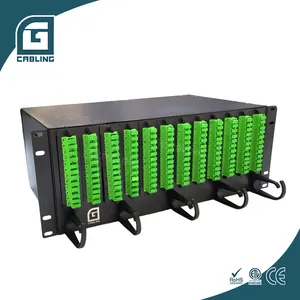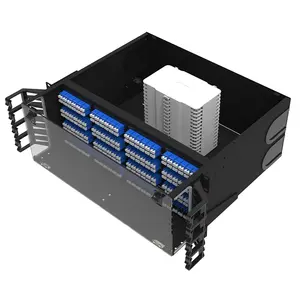
Gcabling 4U 19" 144 Core SC Rack Mount 144 Port Fibre Optical Fiber Optic Distribution Frame Patch Panel Odf


OEM Customizable Logo 1U 72F Upper Flip Design 3 Section Slide Rack Mount Fusible Optical Fiber Patch Panel





















The 144 core fiber optic patch panel is a pivotal component in the realm of fiber optic networks, serving as a central point for cable management and interconnections. This category encompasses a range of panels designed to consolidate and distribute optical fibers, their signals, and connections.
Fiber optic patch panels come in various forms, with the 144 core fiber optic patch panel being a significant variant, catering to medium to large-scale network requirements. These panels can be wall-mounted or rack-mounted, depending on the infrastructure needs, and are typically structured in a modular fashion to accommodate the complexity and scalability of network design.
The construction of a fiber optic patch panel is crucial for its durability and performance. Common materials include high-grade metals for the outer casing and precision-engineered plastics for the internal components. This ensures protection against physical damage and electromagnetic interference, maintaining the integrity of the fiber connections.
The 144 core patch panel is equipped with features that enhance its functionality, such as labeled ports and integrated cable management systems. These panels are utilized in various applications, from data centers to telecommunication facilities, where a large number of fiber optic cables are managed.
Opting for a 144 core panel brings several advantages, including improved organization, easier maintenance, and enhanced signal integrity. The centralized nature of the panel simplifies the network's architecture, making it straightforward to identify and rectify issues.
When selecting a fiber optic patch panel, it is essential to consider factors such as the panel's core capacity, compatibility with existing equipment, and the physical environment where it will be installed. These criteria ensure that the panel meets the specific needs of the network it will serve.